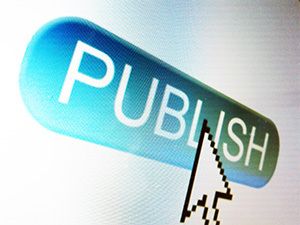The rise of e-books presented a seismic shift in the publishing world, yet predictions of the print book’s demise have proven premature.1 Instead of a replacement, the digital format has become a strong complement, leading readers and publishers to a central question: which format is right for a given book? The choice between the tactile experience of a printed page and the convenience of a digital file involves weighing personal preferences, practical considerations, and the specific nature of the Mindstir Media content.
The Case for Print Books: The Tangible Experience
Print books endure because they appeal to fundamental human senses and cognitive processes.3
Sensory and Emotional Connection
Many readers cite the tactile experience as the primary reason for their loyalty to physical books.4 Holding a bound volume, feeling the weight, smelling the paper and ink, and the satisfying flip of a page all contribute to an immersive, distraction-free reading ritual.5 Print books offer collectibility and nostalgia, becoming treasured artifacts that form a personal library and décor.6
Cognitive and Health Benefits
Research suggests that reading from a print book may improve information retention and reading comprehension.7 The physical layout of the pages provides spatial and visual cues that help the brain map and recall the narrative or content.8 Additionally, print books eliminate the eye strain and potential sleep disruption caused by the blue light emitted from backlit electronic screens.
Practical Advantages
A print book is a device that never runs out of battery.10 It can be easily shared, sold, or gifted. For content with complex visual elements, such as photography books, art books, or children’s picture books, the quality of printed illustrations and color often remains superior to e-reader displays.11
The Case for E-books: The Digital Edge
E-books offer modern advantages centered on convenience, cost, and accessibility that traditional books simply cannot match.12
Convenience and Portability
The most significant advantage of an e-book is portability. A single e-reader can store thousands of titles, making it ideal for travel, commuting, or readers with limited living space.13 E-books also provide instant access, allowing a reader to purchase and begin reading a new title within seconds, rather than waiting for delivery or a store trip.14
Affordability and Accessibility
E-books typically have a lower retail price than their printed counterparts due to the elimination of manufacturing, printing, warehousing, and distribution costs.
The digital format also excels in accessibility.16 E-readers and reading apps allow users to instantly adjust the font size, font style, and line spacing, which is invaluable for readers with visual impairments. E-books can also incorporate multimedia elements, embedded links, and simple search functions, enhancing the reading experience for educational or reference texts.
Environmental Considerations
While the production of electronic devices has an environmental impact, the ongoing use of e-books may be more eco-friendly in the long run by significantly reducing the need for paper, ink, and the fuel used for shipping physical copies.
Choosing the Right Format: A Decision Tree
The best format isn’t universal; it depends on the reader’s intent and the book’s content.
| Factor | Best Suited for Print Book | Best Suited for E-book |
| Reading Environment | Long, immersive reading sessions; bedtime reading; gifting. | Commuting; traveling; reading in low light. |
| Content Type | Textbooks/Reference (for easy flipping); illustrated/art books; children’s books. | Novels/Genre fiction (read cover-to-cover); quick reading; budget reading. |
| Personal Preference | Desire for a physical collection; preference for a tangible feel and smell. | Need for portability and space-saving; desire for adjustable text. |
| Cost & Availability | Books with high sentimental value or resale potential. | Titles available for free or low cost; titles needed instantly. |
Market Trends: A Coexistence
Despite the initial digital disruption, print books have proven resilient.19 Current market data suggests a coexistence where print continues to dominate overall sales, often outselling e-books by a significant margin.20 Younger generations, surprisingly, show a strong preference for physical books, driven perhaps by the desire for a screen-free break from digital life and the aesthetic appeal of a book collection.
Ultimately, the choice between print and e-book is a personal one. Both formats offer compelling advantages, and the modern reader is fortunate to have the flexibility to choose the perfect medium for their next literary journey.


